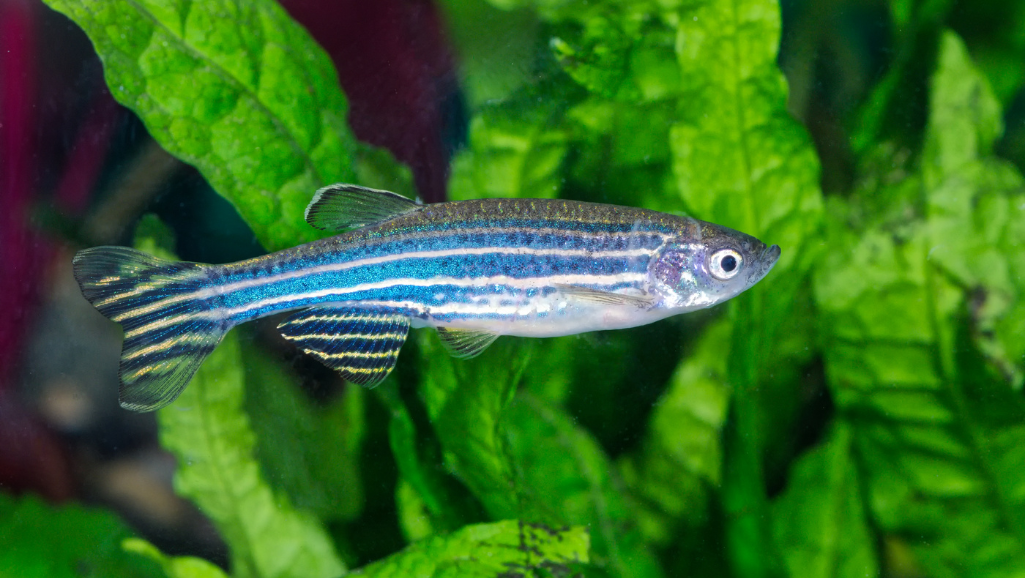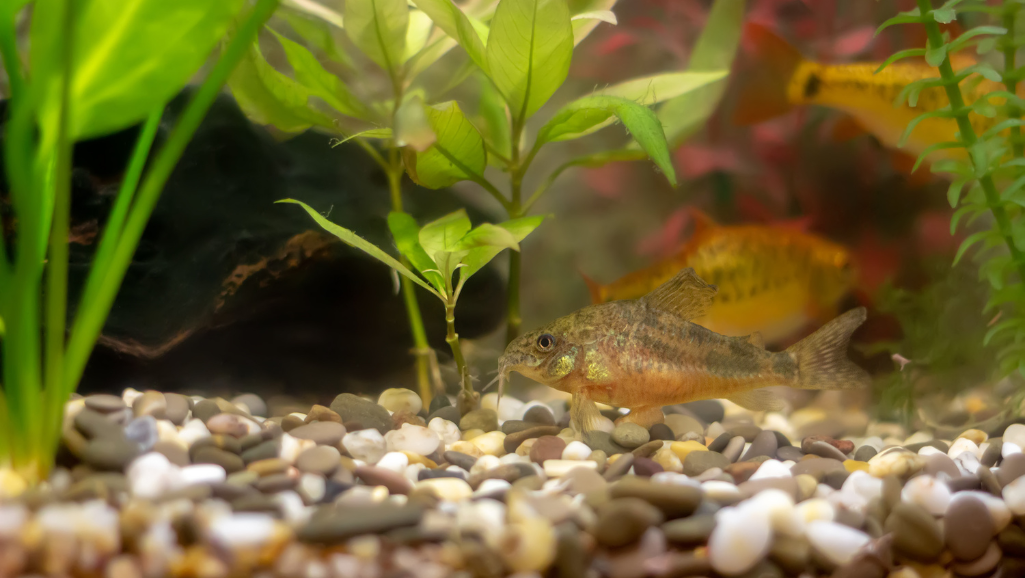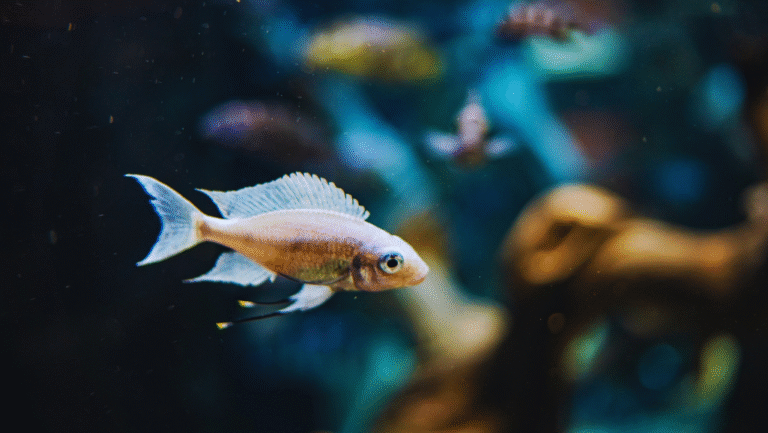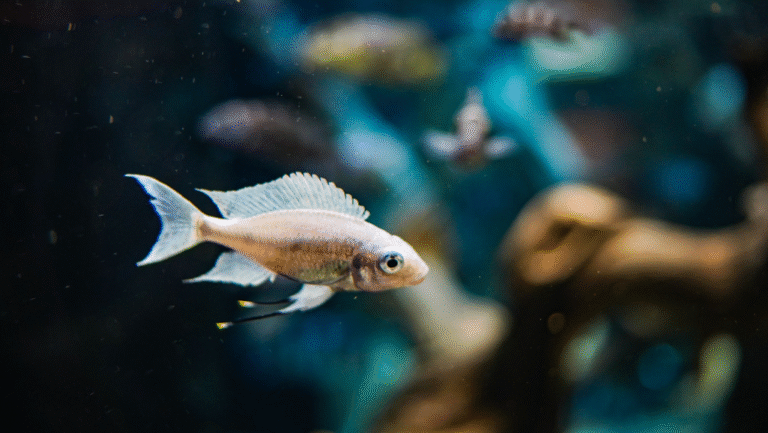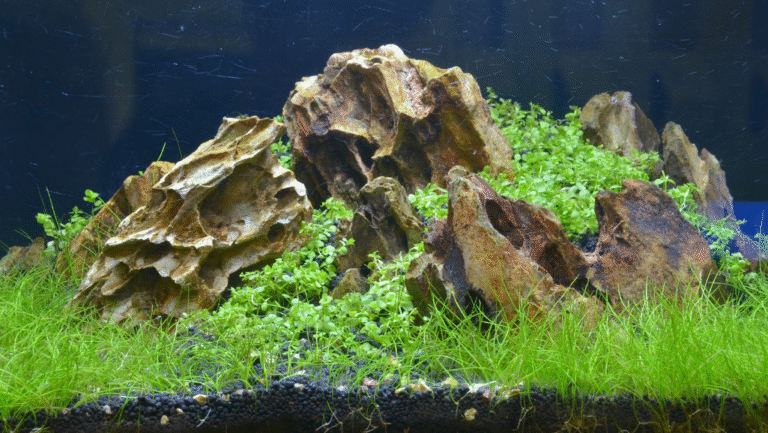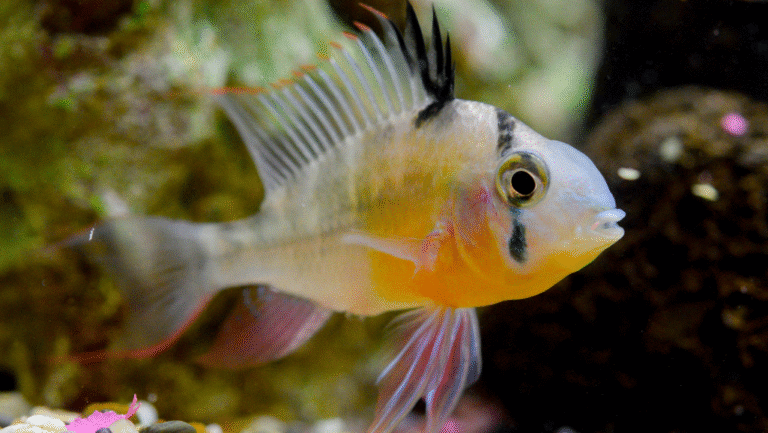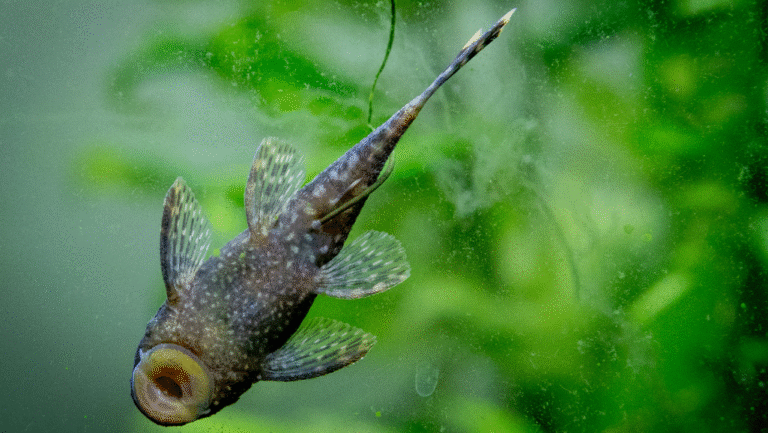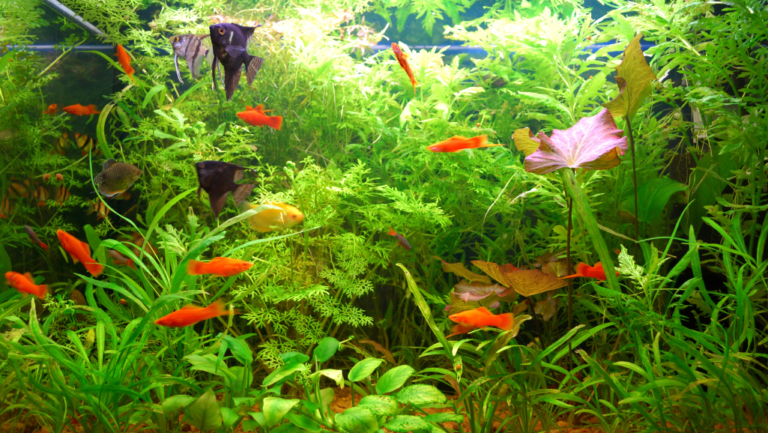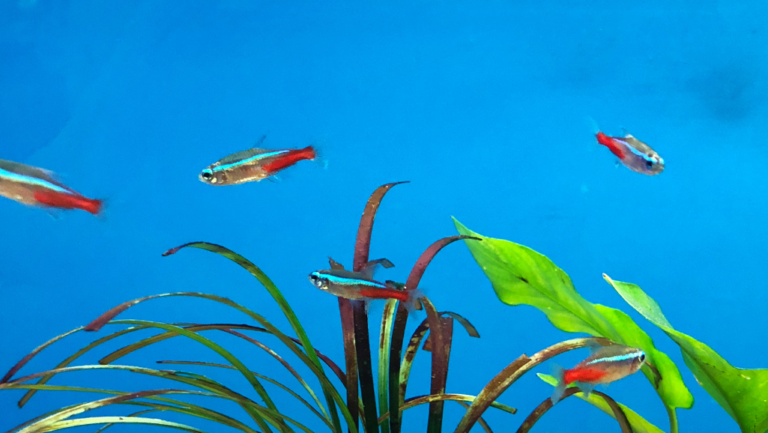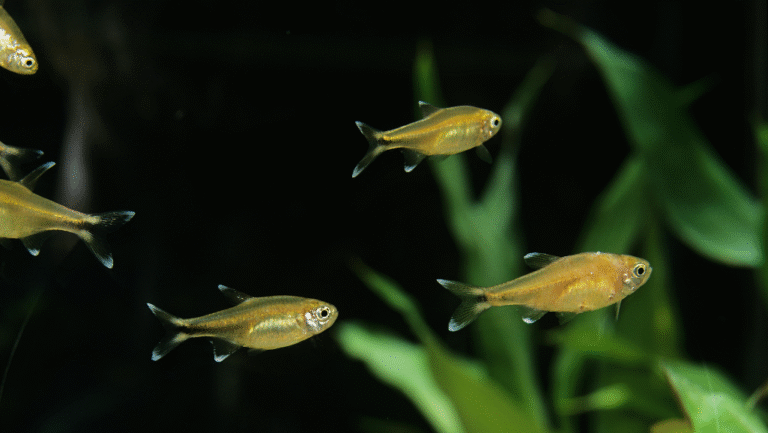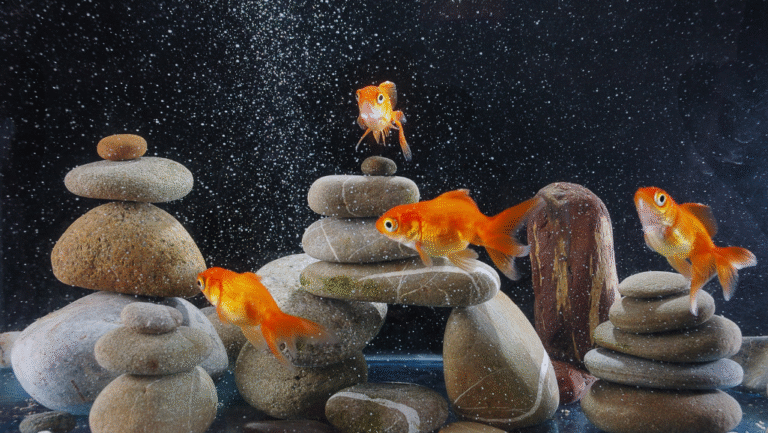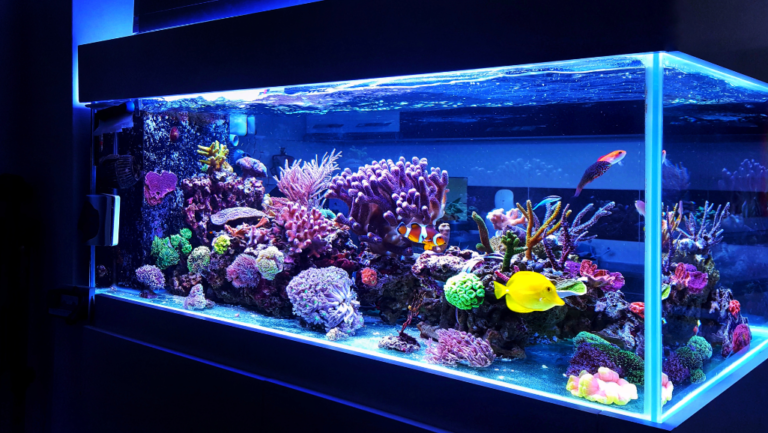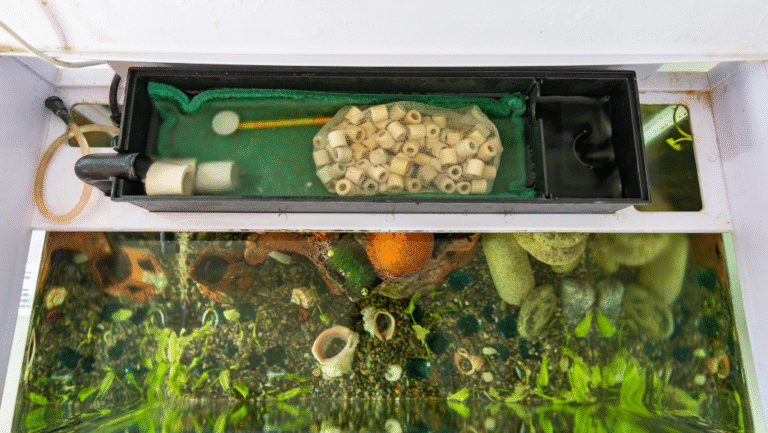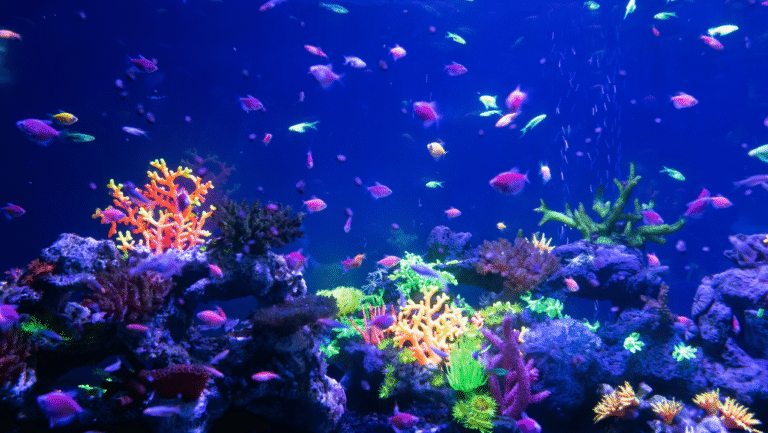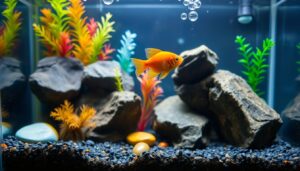Choosing the perfect name for your aquatic pets can be a fun and creative process. Whether you’re a seasoned hobbyist or just starting out, giving your underwater companions unique names adds a personal touch to your aquarium experience. This guide will help you explore popular species and provide practical tips for naming and caring for them.
From beginner-friendly options like platys and guppies to exotic varieties, we’ll cover a range of species that thrive in home tanks. You’ll also learn about tank setup, maintenance, and creative naming themes inspired by pop culture, food, and more. Our goal is to make this guide both informative and enjoyable for U.S. readers.
Ready to dive in? Let’s explore the world of aquarium pets and discover how to make your underwater habitat vibrant and full of personality. For more expert tips and resources, visit AquaJoyLife.
Key Takeaways
- Naming your aquatic pets adds a personal touch to your aquarium experience.
- This guide covers popular species like platys, guppies, and exotic varieties.
- Learn about tank setup, maintenance, and creative naming themes.
- Perfect for both beginners and experienced hobbyists.
- Find inspiration from pop culture, food, and more for unique names.
Introduction to Aquarium Fish Names
Giving your underwater pets meaningful names enhances the joy of tank ownership. It’s more than just a fun activity—it’s a way to connect with your aquatic companions and make your tank feel like a true community.
A well-chosen name can reflect your pet’s unique color, behavior, or even their role in the family dynamic. For example, a vibrant neon tetra might inspire a name like “Sparkle,” while a calm betta could be called “Zen.” These small details add personality to your underwater world.
Naming your pets also encourages better care. When you take the time to choose a name, you’re more likely to pay attention to their needs and create a thriving environment. As one enthusiast shared,
“Naming my fish made me more invested in their well-being.”
Trends in pet care and aquarium communities often influence naming choices. From pop culture references to food-inspired themes, there’s no shortage of creative ideas. This guide will explore both practical tips and imaginative approaches to help you find the perfect names for your aquatic friends.
Understanding Fish in Aquarium Names
Naming your aquatic pets goes beyond a simple label—it’s a way to bond with your underwater companions. This practice not only personalizes your tank but also strengthens your connection to the species you care for. Many hobbyists find that assigning names encourages better attention to their pets’ needs and behaviors.
A name often reflects a pet’s unique traits, such as size, color, or temperament. For example, a vibrant betta might be called “Blaze,” while a slow-moving catfish could earn the name “Chill.” These descriptors not only add personality but also make it easier to identify and care for each individual in your tank.
Importance of Naming Your Aquarium Fish
Naming your aquatic pets fosters a sense of responsibility and attachment. When you give a name, you’re more likely to observe their habits and ensure their environment is optimal. As one enthusiast noted,
“Naming my pets made me more attentive to their health and happiness.”
Descriptive keywords in names also play a crucial role. Terms like “Stripes” for a tiger barb or “Goldie” for a golden guppy provide quick visual cues. This practice is especially helpful when managing multiple species in a single tank.
The Role of Keywords in Fish Identification
Using consistent naming conventions helps hobbyists share care tips and research effectively. For instance, naming a neon tetra “Neo” or a dwarf gourami “Mini” highlights their size and characteristics. This uniformity simplifies communication within the aquarium community.
Popular species often have names that reflect their physical traits. The tiger barb, known for its stripes, is a prime example. Similarly, the corydoras catfish’s bronze hue is captured in its scientific name, Corydoras aeneus. These naming practices make it easier to identify and care for your aquatic pets.
Popular Freshwater Aquarium Species Overview
Freshwater species bring life and color to any tank. From vibrant neon tetras to playful guppies, these aquatic pets are favorites among hobbyists. Their unique traits and compatibility make them ideal for both beginners and experienced tank owners.
Neon tetras are known for their striking blue and red hues. These small, peaceful creatures thrive in groups of six or more. A 10 to 20-gallon tank is perfect for their schooling behavior. Their vibrant color patterns add a lively touch to any setup.
Guppies are another popular choice. With their dazzling tails and easy care, they’re perfect for smaller tanks. A 10-gallon setup can comfortably house a small group. Their peaceful temperament makes them great companions for other species.
Zebra danios are hardy and active. Their black and white stripes make them stand out in any tank. A 10-gallon setup is ideal, and they thrive in groups. Their energetic nature adds excitement to your aquatic environment.
White cloud mountain minnows are perfect for cooler water tanks. Their silver bodies and red fins create a stunning display. A 10-gallon tank is sufficient, and they do well in groups. Their calm demeanor makes them excellent community fish.
When choosing species, consider tank size and compatibility. Smaller setups work well for guppies and neon tetras, while larger tanks suit zebra danios and white clouds. Schooling behavior and peaceful temperaments ensure harmony in your tank.
These freshwater species not only enhance your tank’s beauty but also suit various lifestyles. Whether you’re a beginner or a seasoned hobbyist, there’s a perfect match for your setup. Explore these options to create a thriving aquatic environment.
Small Aquarium Fish for Compact Tanks
Compact tanks are perfect for small species, offering a manageable and cost-effective way to enjoy aquatic life. These setups are ideal for beginners, as they require less maintenance and space while still providing a vibrant underwater environment. Choosing the right species ensures your tank thrives without compromising on beauty or health.
Species to Consider for Small Tanks
Platys and guppies are excellent choices for compact setups. Platys are hardy and colorful, making them a favorite among hobbyists. They grow to about 2-3 inches and thrive in groups, adding energy to your tank. Guppies, known for their vibrant tails, are equally low-maintenance and adapt well to smaller spaces.
Other great options include neon tetras and white cloud mountain minnows. Neon tetras, with their striking blue and red hues, are perfect for schooling in a 10-gallon tank. White clouds, with their silver bodies and red fins, are ideal for cooler water setups. Both species are peaceful and easy to care for.
Benefits of Small Fish in Compact Tanks
- Easier Maintenance: Smaller setups require less cleaning and water changes, saving time and effort.
- Lower Costs: Compact tanks are more affordable to set up and maintain, making them beginner-friendly.
- Space Efficiency: These tanks fit well in apartments or small homes, offering flexibility in placement.
Care Tips for Small Tanks
When managing a compact tank, it’s essential to monitor water quality and avoid overcrowding. A 5-gallon setup is suitable for a small group of guppies or platys. Ensure proper filtration and regular water changes to maintain a healthy environment.
Social needs are also crucial. Species like neon tetras and guppies thrive in groups, so aim for at least six individuals. This promotes natural behavior and reduces stress. By following these tips, you can create a thriving aquatic habitat in limited space.
Examining Color and Patterns in Fish
The vibrant hues and intricate patterns of aquatic pets make them a visual delight. These features not only enhance their appeal but also influence how we name and connect with them. From bold stripes to shimmering scales, each trait tells a story and inspires creativity.
Color plays a significant role in reflecting personality. A neon tetra’s bright blue and red stripes might inspire a name like “Spark,” while a betta’s flowing fins could lead to “Velvet.” These descriptive choices highlight their unique traits and make them stand out in your tank.
Color Varieties and Unique Patterns
Popular species showcase a stunning variety of colors. Neon tetras, for example, are known for their electric blue and red hues. Cardinal tetras take it a step further with deeper red tones. These vibrant shades are a result of carotenoids in their diet, which enhance their natural brilliance.
Patterns also play a key role. Zebra danios, with their black and white stripes, are a classic example. Their bold design often inspires names like “Ziggy” or “Stripe.” Similarly, the intricate spots of a pufferfish can lead to creative choices like “Dot” or “Patch.”
Lighting and aquascaping further enhance these features. Proper lighting brings out the shimmer in scales, while plants and decorations create a backdrop that highlights their colors. As one enthusiast shared,
“The right setup makes my pets’ colors pop, adding life to the tank.”
Whether you’re drawn to bold stripes or subtle gradients, the variety of colors and patterns in aquatic pets offers endless inspiration. These traits not only make them visually stunning but also help you choose names that reflect their unique charm.
Optimizing Tank Setup and Aquascape
A well-designed tank setup is the foundation of a thriving aquatic environment. It ensures your pets stay healthy while creating a visually stunning display. From live plants to efficient filtration, every detail matters.
Creating an Inviting Aquatic Environment
Start by arranging live plants, rocks, and decor to mimic natural habitats. Use foreground plants like Hemianthus callitrichoides for depth and background plants like Vallisneria for height. This layering technique enhances visual appeal and provides hiding spots for your pets.
Proper water flow and filtration are essential. A good system keeps the tank clean and oxygenated, preventing disease. As one enthusiast shared,
“Investing in quality filtration made a noticeable difference in my tank’s health.”
For a harmonious community, create open swimming areas and shaded zones. This balance ensures all species feel comfortable. Small schooling pets, like tetras, thrive in such environments.
- Plan your layout: Experiment with hardscape arrangements before adding water or plants.
- Choose the right plants: Opt for beginner-friendly options like Anubias or Java Fern for easier maintenance.
- Monitor water quality: Regular testing ensures optimal conditions for plant and pet health.
By focusing on both aesthetics and functionality, you can create a tank that’s both beautiful and supportive of life. Whether you’re a beginner or an experienced hobbyist, these tips will help you achieve a balanced and thriving aquatic environment.
Tank Size, Water Temperature and Other Key Parameters
Maintaining the right tank size and water temperature is essential for a healthy aquatic environment. These factors directly impact the well-being of your pets and the stability of their habitat. By understanding and managing these parameters, you can create a thriving space for your underwater companions.
Tank Size Guidelines
Choosing the correct size ensures your pets have enough space to swim and thrive. For beginners, a 10 to 20-gallon setup is ideal. Larger tanks, like 55 gallons, offer better stability and are easier to maintain. Always consider the number and type of pets when selecting a tank.
- Small species: A 10-gallon tank works well for guppies or neon tetras.
- Larger species: A 55-gallon or bigger setup is recommended for active swimmers like cichlids.
- Overcrowding risks: Too many pets in a small space can lead to stress and health issues.
Managing Water Temperature
Stable temperature is critical for your pets’ health. Most freshwater species thrive in a range of 72–82°F. Use a reliable heater and thermometer to monitor and adjust the water conditions. Sudden changes can be harmful, so avoid placing the tank near windows or vents.
“Consistent temperature control is key to preventing stress and disease in aquatic pets.”
- Tropical species: Maintain a warmer range of 76–82°F.
- Cooler water species: Keep the temperature between 68–74°F.
- Monitoring tools: Invest in a digital thermometer for accurate readings.
Proper filtration and regular testing of water quality are equally important. For more tips on setting up and maintaining an aquarium, explore our comprehensive guide. By following these guidelines, you can ensure a safe and comfortable environment for your pets.
Choosing the Right Food for Aquarium Fish
Proper nutrition is the cornerstone of a healthy aquatic environment. Providing the right food ensures your pets thrive and maintain their vibrant colors and energy levels. A balanced diet tailored to their specific needs is essential for their overall well-being.
Understanding the dietary requirements of your pets is the first step. Different species have unique needs, and offering a variety of options keeps them healthy and happy. From flakes and pellets to live or frozen proteins, there’s a wide range of choices to explore.
Feeding Routine and Diet Options
Establishing a consistent feeding routine is crucial. Most pets benefit from two small meals a day, ensuring they receive adequate nutrition without overeating. Overfeeding can lead to water quality issues, so moderation is key.
- Flakes and Pellets: These are staples for many species. High-quality options contain essential nutrients and are easy to portion.
- Live and Frozen Foods: Options like bloodworms and brine shrimp provide protein-rich meaty food for carnivorous pets.
- Specialty Foods: Algae wafers and spirulina-based options cater to herbivorous species, promoting digestion and vibrant colors.
As one enthusiast shared,
“A varied diet not only keeps my pets healthy but also brings out their natural behaviors.”
When selecting food, consider the specific needs of your pets. For example, carnivorous species thrive on meaty food like bloodworms, while herbivores prefer plant-based options. Always check the ingredients to avoid fillers like wheat or corn, which offer little nutritional value.
Monitoring feeding habits is equally important. Uneaten food can pollute the water, so remove any leftovers promptly. By following these guidelines, you can ensure your pets receive the nutrients they need while maintaining a clean and healthy environment.
Planning a Harmonious Community Tank
Creating a peaceful underwater environment starts with thoughtful planning. A well-balanced community tank not only enhances the beauty of your setup but also promotes healthier behavior among its inhabitants. By carefully selecting compatible species, you can reduce stress and create a thriving ecosystem.
Benefits of a Community Tank
A community tank offers numerous advantages. It encourages natural behaviors, reduces aggression, and creates a visually dynamic environment. When species coexist peacefully, they exhibit more vibrant colors and active movements, making your tank a joy to observe.
Choosing Compatible Species
Selecting the right mix of species is crucial. Consider factors like size, temperament, and environmental needs. For example, guppies and neon tetras thrive together due to their peaceful nature and similar water requirements. Avoid pairing aggressive species, as this can lead to conflicts.
- Size Matters: Smaller species like tetras and rasboras are ideal for community setups.
- Temperament: Choose peaceful species that won’t bully others.
- Environmental Needs: Ensure all species share similar water temperature and pH preferences.
Understanding Schooling Behavior
Schooling fish, such as tetras and danios, thrive in groups of six or more. This behavior reduces stress and deters dominant individuals from targeting weaker ones. A proper school size ensures harmony and mimics their natural habitat.
“Keeping schooling fish in groups not only enhances their well-being but also adds movement and life to the tank.”
Pitfalls to Avoid
Common mistakes include overcrowding, mixing incompatible species, and neglecting territorial needs. Aggressive species like cichlids should be kept separately or with similarly tempered companions. Always research before adding new inhabitants to your tank.
Real-Life Examples
Successful community setups often include a mix of tetras, guppies, and bottom dwellers like corydoras. These combinations balance the tank’s activity levels and ensure all areas are utilized. For more detailed guidance, check out our aquarium fish compatibility chart.
By following these tips, you can create a harmonious community tank that’s both beautiful and functional. Whether you’re a beginner or an experienced hobbyist, thoughtful planning ensures a thriving aquatic environment.
Tips for Breeding and Acclimating Aquarium Fish
Successfully introducing new aquatic pets into your setup requires careful planning and attention to detail. Whether you’re breeding or simply adding to your community, proper quarantine and acclimation are essential for their health and well-being.
Quarantine and Acclimation Tips
Quarantining new arrivals is a critical step to prevent the spread of disease. Set up a separate tank with similar water conditions to your main setup. This allows you to monitor their health before introducing them to the community.
Acclimation ensures your pets adjust to their new environment without stress. The drip method is highly recommended for sensitive species. Gradually mix tank water into their transport bag over 1-2 hours. This helps them adapt to changes in temperature and pH levels.
“Proper acclimation can increase survival rates by up to 50%, making it a vital step for any hobbyist.”
Breeding Tips for Optimal Results
Breeding requires specific conditions to encourage spawning. Maintain stable water parameters and provide hiding spots for fry. Certain species, like guppies, thrive in family groups and may breed more readily in a well-maintained environment.
- Set Up a Breeding Tank: Use a separate setup with gentle filtration and plenty of plants.
- Monitor Water Quality: Keep ammonia and chlorine levels at zero for optimal health.
- Choose Compatible Mates: Pair species with similar temperaments to reduce aggression.
By following these steps, you can create a thriving environment for both new arrivals and breeding pairs. Proper care during quarantine and acclimation ensures a smooth transition and long-term success.
Creative Themes for Naming Your Aquarium Fish
Creative naming can turn your tank into a vibrant and unique underwater world. Whether you prefer traditional or modern trends, the right name can reflect your pet’s personality and enhance your connection with them. Let’s explore how to choose names that stand out and make your underwater companions feel special.
Traditional Versus Modern Name Trends
Traditional naming often draws inspiration from nature, such as “Coral” or “Bubbles.” These classic choices highlight a pet’s natural beauty and simplicity. Modern trends, however, lean toward quirky and pop culture-inspired names like “Neo” or “Dory.” Both styles offer a variety of options to suit your preferences.
For example, a vibrant betta might be named “Blaze” for its fiery colors, while a playful guppy could earn the name “Ziggy” for its energetic movements. These choices not only reflect your pet’s traits but also add a personal touch to your tank.
How Names Reflect Appearance and Behavior
Names often mirror a pet’s unique characteristics. A striped zebra danio might be called “Stripe,” while a calm catfish could be named “Zen.” These descriptive choices make it easier to identify and connect with each individual in your tank.
“Naming my pets made me more attentive to their habits and needs,” shared one enthusiast.
Examples of Creative Naming Themes
- Color-Inspired: “Amber” for a golden guppy or “Cobalt” for a blue tetra.
- Behavior-Based: “Dash” for a fast swimmer or “Chill” for a laid-back pet.
- Pop Culture References: “Nemo” for a clownfish or “Blinky” for a tetra.
Enhancing the Owner-Pet Connection
The right name fosters a deeper bond between you and your underwater companions. It encourages you to observe their habits and ensure their environment is optimal. As one hobbyist noted, “Naming my pets made me more invested in their well-being.”
Creative Prompts for Brainstorming Names
Looking for inspiration? Consider these prompts:
- What’s your pet’s most striking feature? Use it as a starting point.
- Think of your favorite movies, books, or songs for pop culture ideas.
- Combine two words, like “Sunny” and “Ray,” for a unique twist.
By exploring these themes, you can find the perfect name that reflects your pet’s personality and makes your tank truly one-of-a-kind.
Inspiring Names from Pop Culture and Food
Names inspired by pop culture and food bring a unique charm to your underwater world. Whether you’re a fan of movies, TV shows, or delicious dishes, these themes offer endless possibilities for creative names. They add a fun and personal touch to your tank, making it a reflection of your interests and style.
Fictional Inspirations for Unique Names
Pop culture is a treasure trove of name ideas. Characters from animated films like “Finding Nemo” or “The Little Mermaid” can inspire choices like “Nemo” or “Ariel.” For a quirky twist, consider “Darth Betta” for a bold betta or “Blinky” for a tetra. These references not only add humor but also make your tank feel like a part of your favorite stories.
Literature and TV shows also offer great options. Names like “Sherlock” for a clever pet or “Khaleesi” for a regal one can highlight their personality. As one enthusiast shared,
“Naming my pets after fictional characters makes them feel like part of my world.”
Food-Themed Names for a Lighthearted Touch
Food-inspired names are another fun addition to your tank. A vibrant orange pet might be called “Goldie,” while a playful one could earn the name “Big Mac.” These choices add a touch of humor and make your underwater companions even more endearing.
For a blue pet, consider “Blueberry” or “Sapphire.” These names not only reflect their color but also add a playful vibe. Mixing food and pop culture ideas can lead to truly unique combinations, like “Sushi Roll” or “Captain Crunch.”
Mixing Themes for a Truly Unique Name
Don’t be afraid to blend ideas from different domains. A pet with a bold personality might suit “Thor,” while a calm one could be named “Chai.” The key is to choose a name that captures their unique traits and resonates with you.
By exploring these themes, you can find the perfect name that reflects your pet’s personality and makes your tank truly one-of-a-kind. Whether you draw inspiration from pop culture, food, or a mix of both, the possibilities are endless.
Highlighting Rare and Exotic Aquarium Species
Discovering rare and exotic species can transform your underwater world into a captivating display of nature’s wonders. These unique additions bring a sense of adventure and exclusivity to your aquatic journey, making your setup stand out.
One standout example is the marbled hatchetfish. Known for its unusual body shape and shimmering silver color, this species adds a touch of elegance to any freshwater aquarium. Its ability to glide above the water’s surface is a behavior rarely seen in common fish.
Another exotic choice is the German blue ram. With its vibrant blue and yellow hues, this species is a visual delight. However, it requires specific water conditions, including a pH level below 7 and soft water, making it a challenge for beginners but a rewarding project for advanced hobbyists.
For those seeking a unique bottom dweller, the catfish family offers the zebra pleco. Its striking black and white stripes make it a standout in any tank. This species thrives in well-oxygenated water and prefers a diet rich in protein.
“Adding rare species to my tank has been a game-changer. It’s like owning a piece of the wild,” shared one enthusiast.
Compared to more common fish, these exotic species often require specialized care. For instance, the discus fish demands a tank size of at least 250 liters and specific water parameters, including a pH level under 7 and low hardness. These requirements make them ideal for experienced hobbyists.
Exploring this variety of rare species not only enhances your freshwater aquarium but also deepens your understanding of aquatic life. While they may require extra effort, the rewards of owning such unique pets are well worth it.
Safety and Maintenance Best Practices
Keeping your underwater environment healthy requires consistent care and attention. A well-maintained tank ensures your aquatic pets thrive and stay vibrant. By following a few key practices, you can prevent issues and create a balanced habitat.
Regular Cleaning and Disease Prevention
Establishing a cleaning routine is essential for maintaining water clarity and quality. Weekly water changes of 10-25% help remove waste and keep the environment fresh. Use a gravel vacuum to clean the substrate and remove debris that can affect water quality.
Monitoring water parameters is equally important. Test for pH, ammonia, nitrite, and nitrate levels weekly to ensure they stay within safe ranges. As one enthusiast shared,
“Regular testing has saved my pets from potential health issues.”
Disease prevention starts with a clean setup. Quarantine new arrivals for at least two weeks to avoid introducing illnesses. Keep equipment like filters and heaters in good condition by inspecting them monthly. A well-maintained tank reduces stress on your pets and prevents outbreaks.
Maintaining a Balanced Environment
Proper filtration and temperature control are key to a healthy tank. Choose a filter that matches your setup size and clean it regularly to ensure optimal performance. Maintain a stable temperature between 74-82°F to keep your pets comfortable.
For more detailed guidance on maintaining a freshwater tank, visit this comprehensive guide.
By following these best practices, you can create a safe and thriving environment for your underwater companions. Regular maintenance not only enhances their health but also makes your tank a joy to observe.
Personalizing Your Aquarium Experience with Unique Names
Personalizing your underwater world starts with a thoughtful approach to naming. A unique name not only adds character but also strengthens your bond with your aquatic companions. This process goes beyond labels—it’s about creating a connection that enhances your experience.
Choosing Names that Reflect Personality
When selecting a name, consider your pet’s behavior, color, and size. A vibrant swimmer might inspire a name like “Blaze,” while a calm companion could be called “Zen.” These choices highlight their unique traits and make them stand out in your tank.
For example, a playful fish might suit “Dash,” while a larger addition could earn the name “Titan.” These descriptors not only reflect their personality but also make it easier to identify and care for each individual.
Examples of Names that Evoke Emotion
Names can also evoke fond memories or emotions. A golden pet might be called “Sunny,” while a blue one could inspire “Sapphire.” These choices add a personal touch and make your underwater world feel more intimate.
“Naming my pets made me more attentive to their habits and needs,” shared one enthusiast.
Considering the Family Dynamic
When naming your pets, think about the family dynamic of your tank. Complementary names like “Finn” and “Splash” create a cohesive theme. This approach not only enhances the aesthetic but also fosters a sense of community.
Practical Tips for Brainstorming Names
- Observe Behavior: Watch your pets’ movements and interactions for inspiration.
- Use Color as a Guide: Names like “Ruby” or “Cobalt” highlight their appearance.
- Draw from Pop Culture: Characters like “Nemo” or “Dory” add a fun twist.
By following these tips, you can create a personalized underwater environment that reflects your creativity and connection with your aquatic companions.
Conclusion
Creating a thriving underwater environment is both rewarding and fulfilling. By carefully choosing names for your aquatic pets, you not only personalize your tank but also deepen your connection with them. This guide has covered essential tips, from setting up the perfect aquarium to selecting compatible species and maintaining optimal water conditions.
A well-maintained tank with thoughtfully named companions adds personality and joy to your pet care routine. Whether you’re a beginner or an experienced hobbyist, these guidelines will help you create a vibrant and harmonious underwater world.
We encourage you to share your creative names and success stories. Your experiences can inspire others in the community to build their own beautiful aquatic environments. Dive in and enjoy the journey!
